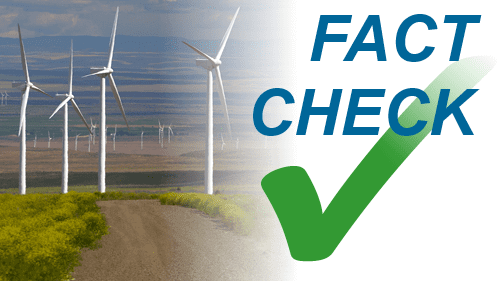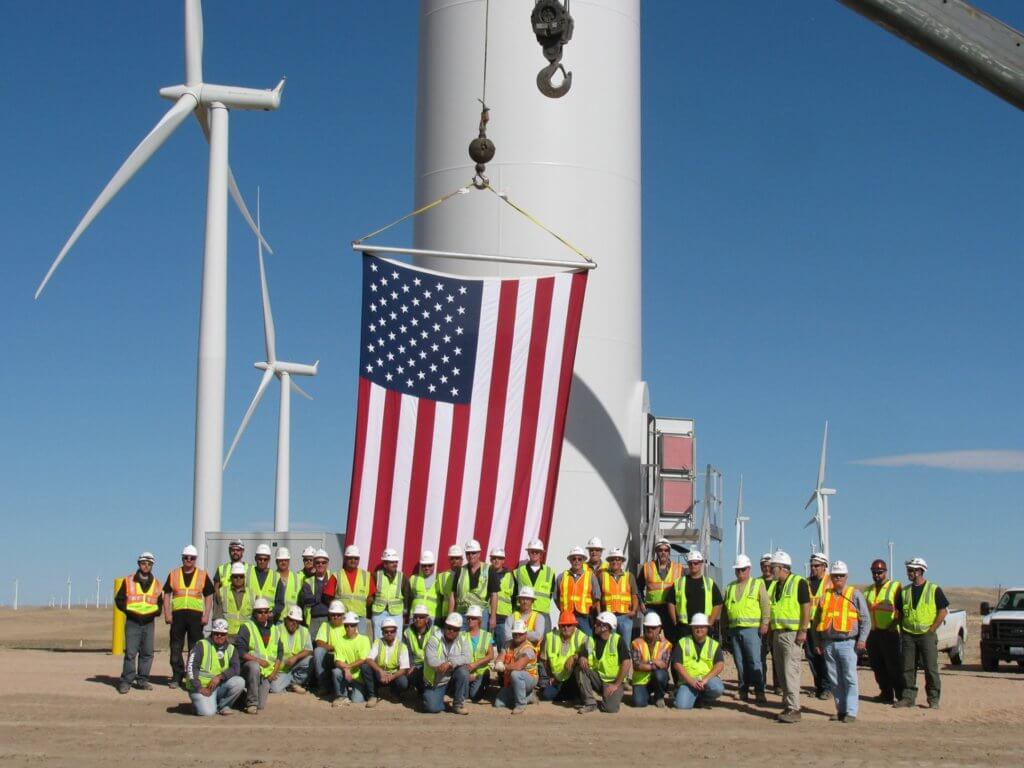Fact Check: Wind energy and eagles can successfully coexist
Through a legacy of care, the U.S. wind industry has worked hard to minimize its impacts on wildlife to the greatest extent possible. However, a new study makes some misleading assumptions that I hope to clear up.
The notion that migratory birds impacted at wind farms may have come from outside the areas immediately surrounding a wind farm, while academically interesting, is not a new one. Simply put, it speaks to the “migratory” nature of these species. This underscores the need for comprehensive landscape analyses that extend management beyond the local area populations and mitigation options, reflecting the need to direct conservation dollars beyond artificially constructed boundaries.
That aside, because golden eagles are impacted by a number of different human sources, of which wind energy makes up a very small fraction, and since wind energy’s effects on the population are relatively small, it is a bit misleading for a study to focus almost singularly on wind’s impacts while omitting from the analysis eagles killed by poisoning, shooting, electrocution, etc., the far larger mortality sources. As USFWS Director Dan Ashe has explained,
“The truth is, thousands of eagles die every year for a variety of reasons — most from natural causes. The vast majority of human-caused deaths result from intentional poisoning and shooting — federal crimes that we aggressively investigate and prosecute. Most other eagle deaths are caused by collisions – with cars, buildings, power lines and other structures. Wind energy facilities represent a fraction of these deaths, and the media’s singular focus on wind turbines is a gross distortion of the truth.”
While some eagles are impacted at individual wind farms, this is not a common occurrence and only happens at a fraction of the wind farms nationally. It is important to note wind power does not have a population-level impact on golden eagles. However, this is an issue the industry takes seriously and works hard to address.
Based on best available data, wind power is responsible for less than three percent of all human-related golden eagle losses. A large percentage of wind energy’s impacts on eagles has historically occurred at a limited number of wind farms in California, which were constructed more than 30 years ago. These are some of the nation’s oldest wind installations, and were built long before the relationship between wind and eagles was fully understood – relying on limited siting practices and utilizing technology that created greater risk than the modern wind farms of today.
The good news is that these older sites are being modernized through a process known as repowering, where numerous smaller, more closely sited, first-generation wind turbines with faster spinning blades are replaced by modern machines. New turbines have a lower risk profile because they are better sited, spaced further apart, and rotate at slower revolutions per minute. Experts estimate that upon completion of the repowering activities eagle fatalities will be reduced by as much as 80 percent or more at those locations.
Throughout the rest of the country, where more modern machinery and better siting practices have been utilized, impacts to individual eagles are a much rarer event.
The U.S. wind industry has been a proactive and willing partner with the U.S. Fish and Wildlife Service (USFWS), working cooperatively to create a strong, effective eagle conservation program.
All human activities, unfortunately, have some impact on wildlife. However, the U.S. wind industry works hard to ensure that its effects are as small as possible, and as a zero-pollution energy source, wind power can help combat many of the threats the country’s eagle populations face.
Range-wide species conservation remains the best way to protect eagle populations. It is the wind industry’s sincere hope that this can be accomplished through the USFWS Eagle Conservation Program, ensuring these iconic birds remain a symbol of the American spirit.
As the only electricity generation source that doesn’t cause population-level impacts, and a leading solution to addressing climate change (which the conservation community views as the largest threat to all birds), wind energy stands ready to work with the conservation community to help accomplish this goal.




